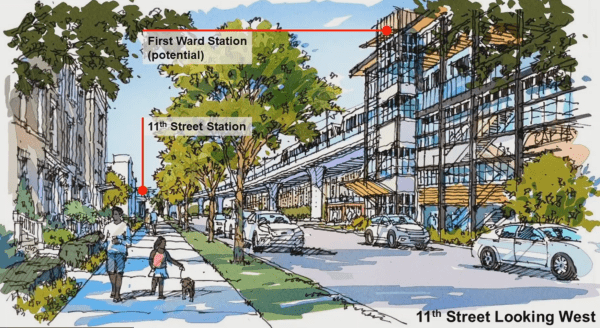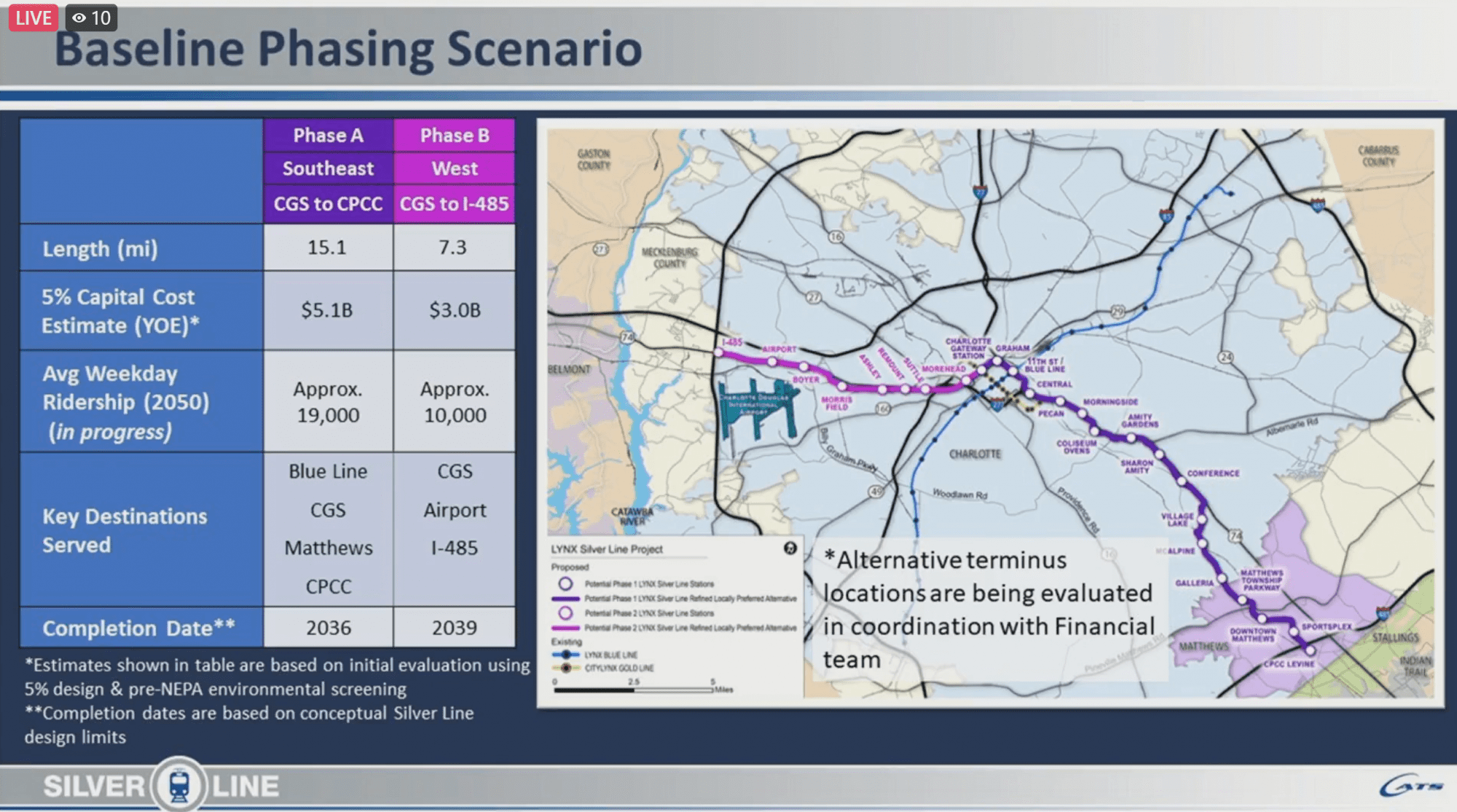Dollar figures for the Silver Line are slowly coming into focus

Charlotte’s new east-west light rail is still decades away from completion, but a City Council committee on Monday got a closer look at some of the numbers dictating how, when and where the rail line is likely to be built.
Running from Gaston County, past the airport, skirting uptown’s northern end and then running southeast along Monroe Road into Union County, the 29-mile Silver Line would be the biggest single part of Charlotte’s $13.5 billion transit plan.
Planners for the transit system said Monday that the portion of the Silver Line running through Mecklenburg County would cost about $8.1 billion. They’re recommending the Charlotte Area Transit System build the Silver Line in two phases: Phase A would run southeast from uptown, mostly along Independence Boulevard and Monroe Road, and open in 2036. Phase B would run west to the airport, opening in 2039.
Phase A, to the southeast, would cost $5.1 billion, with Phase B, to the west, adding another $3 billion. The cost of the rail line east and west to other counties wasn’t factored into this estimate.
The planners estimate that the 15-mile southeast portion of the light rail would carry an average of 19,000 riders daily by 2050. The western segment, about half as long, would carry about 10,000 riders a day by then.

The higher cost and longer timetable are increases from last year. The Charlotte Moves task force initially estimated the project would cost $6.2 billion and be able to open in 2030.
Funding the Silver Line, and Charlotte’s transit plan as a whole, would require a one-cent sales tax and matching federal funds. It’s not clear whether Charlotte plans to push next year for the new sales tax (which would require state legislature approval to go on the ballot as a referendum, and majority support by voters). Building the Silver Line in phases is necessary to minimize disruption and account for the hefty price tag.
[Read more: Settle in for a longer transit tax push]
Also Monday, the City Council’s Transportation, Planning & Environment Committee heard more justification for having the Silver Line run along 11th Street, north of uptown’s center, rather than tunneling under Trade Street. Transit advocates have favored the latter option, which they say would draw more riders and make it easier to transfer to the Blue Line.
But city planners favor the 11th Street route because it offers more redevelopment opportunities – a key component of the plan.
Jane Lim-Yap, a consultant advising the city, said putting the line along 11th Street would open 30 more acres worth of currently underused land than tunneling under Trade Street. She also said that tunneling under Trade Street would be more disruptive, with more business impacts and a street grid that would be interrupted by tunnel entrances and exits spanning 800 feet, or two city blocks each.
“On Trade Street, we have a lot of existing businesses that could be impacted during construction,” she said.
The 11th Street alignment would also generate an estimated $20 million-$35 million worth of annual property tax revenue after the Silver Line’s construction, Lim-Yap said. That’s more than the $15 million – $20 million worth of annual additional property tax that would be generated along Trade Street.
Council member Ed Driggs cautioned against the perception that route decisions would be made solely to maximize property tax revenue for the city.
“I often deal with citizens who suspect our zoning process and our planning process are a revenue exercise,” said Driggs, who also pointed out that much of the redevelopment is likely to happen anyway. “You don’t have a zero alternative here.”
The tunnel option is “off the table” at this point, Driggs said. The Metropolitan Transit Commission, a countywide governing body for CATS, is expected to approve a final alignment in the coming months.